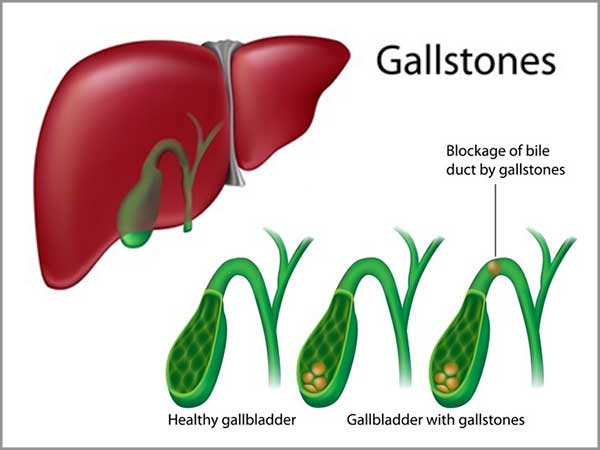Gallbladder Disorders & Gallstone Pancreatitis

The gallbladder, situated below the liver, is a crucial component of the digestive system, tasked with storing bile produced by the liver. However, various disorders affecting this organ can lead to significant health issues, often stemming from inflammation.
Types of Gallbladder Disorders:
Gallstones (Bile Duct Stones):
- These are hardened deposits formed in the gallbladder, often causing blockages in the bile duct.
- Gallstones may develop due to factors such as high cholesterol levels, elevated bilirubin levels, dietary choices, lifestyle habits, and certain medical conditions.
- Gallstone Pancreatitis:
- This condition arises when gallstones obstruct the bile ducts, preventing pancreatic enzymes from reaching the small intestine for proper digestion.
- Cholecystitis:
- Cholecystitis refers to the inflammation of the gallbladder, which can manifest as acute or chronic.
- Chronic cholecystitis can lead to the shrinking of the gallbladder, impairing its ability to store and release bile effectively, often necessitating surgical intervention.
Choledocholithiasis:
- This medical condition occurs when gallstones obstruct the neck of the gallbladder or bile ducts, leading to inflammation and potential complications.
- This medical condition occurs when gallstones obstruct the neck of the gallbladder or bile ducts, leading to inflammation and potential complications.
Biliary Dyskinesia:
- Biliary dyskinesia is characterized by abnormal gallbladder function resulting from inflammation, often triggered by the consumption of high-fat meals.
- Biliary dyskinesia is characterized by abnormal gallbladder function resulting from inflammation, often triggered by the consumption of high-fat meals.
Sclerosing Cholangitis:
- Sclerosing cholangitis involves scarring of the gallbladder due to inflammation or damage to the bile ducts, thereby increasing the risk of liver cancer.
- Treatment may involve medications to suppress the immune system and alleviate symptoms, with liver transplant being the only curative option in severe cases.
Gallbladder Polyps:
- These are growths that develop within the gallbladder. Polyps larger than 1 cm in size may require surgical removal to prevent potential complications.
- These are growths that develop within the gallbladder. Polyps larger than 1 cm in size may require surgical removal to prevent potential complications.
Gangrene and Abscess of the Gallbladder:
- Gangrene and abscess formation in the gallbladder are serious conditions that may arise due to insufficient blood flow or the accumulation of pus, respectively.
- Gangrene and abscess formation in the gallbladder are serious conditions that may arise due to insufficient blood flow or the accumulation of pus, respectively.
- Symptoms: Common symptoms associated with gallbladder disorders include:
- Fever, nausea, vomiting, and upper abdominal pain.
- Chills, jaundice, and discomfort in the abdomen.
- Diagnosis: Diagnostic methods employed to assess gallbladder disorders include:
- Endoscopic retrograde cholangiopancreatography (ERCP) for visualizing and extracting gallstones.
- HIDA scan to measure gallbladder function using radioactive material.
- Magnetic Resonance Cholangiopancreatography (MRCP) for detailed imaging of the biliary system.
- Liver function tests, CT scans, and ultrasounds to evaluate gallbladder health and detect abnormalities.
